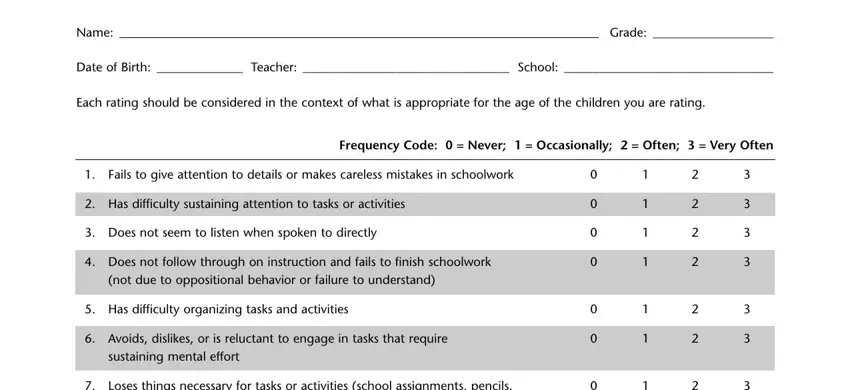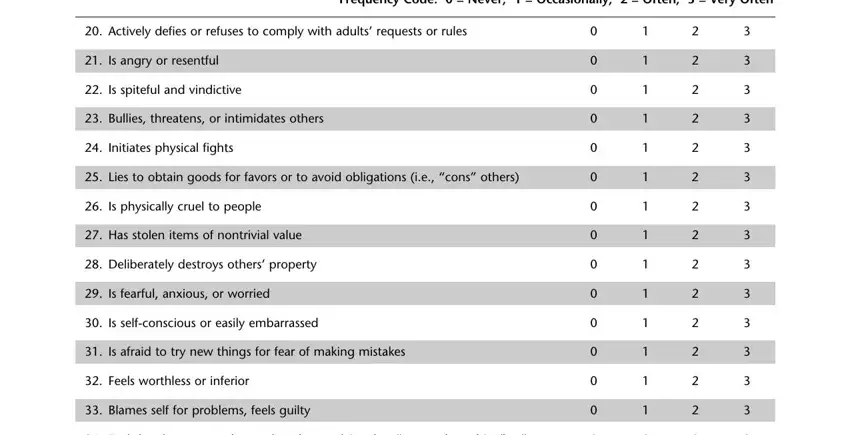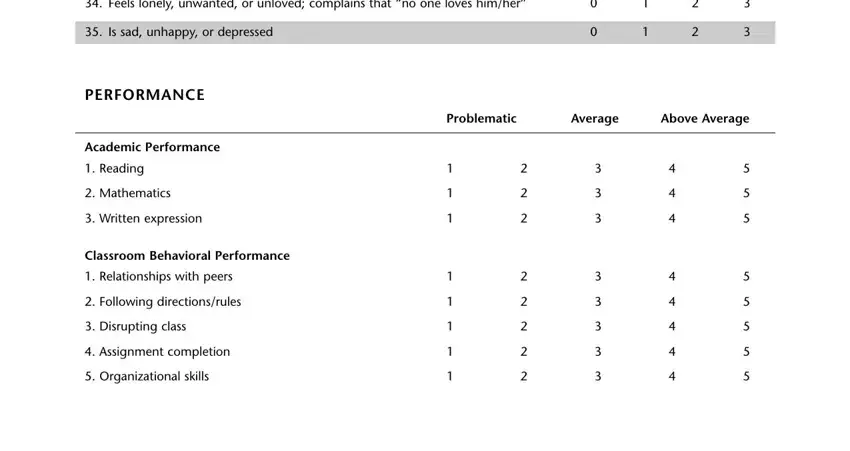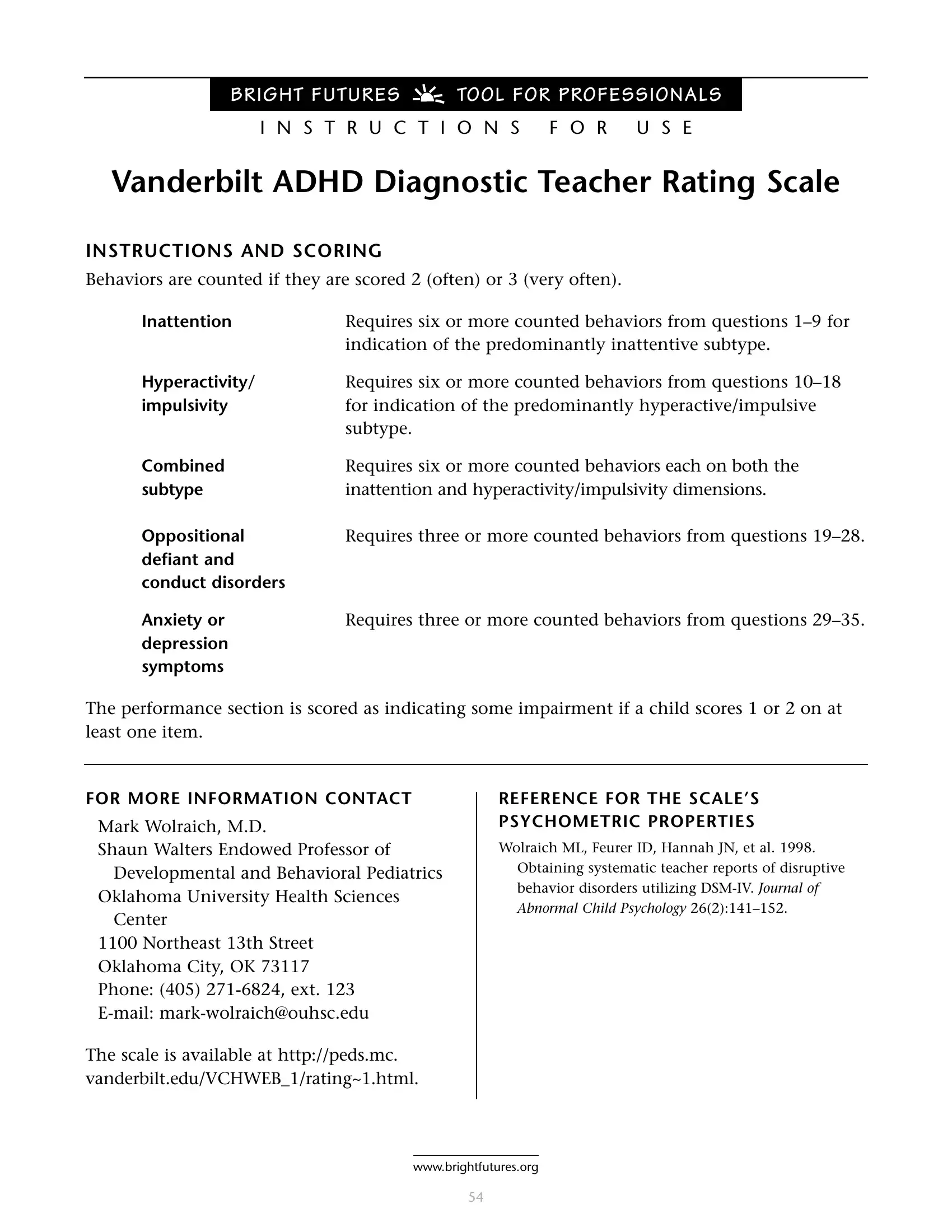Handling PDF files online is certainly easy using our PDF editor. You can fill out vanderbilt adhd assessment here within minutes. Our professional team is relentlessly working to improve the editor and help it become much better for clients with its many functions. Enjoy an ever-evolving experience now! To get the ball rolling, go through these basic steps:
Step 1: Open the form inside our editor by clicking on the "Get Form Button" above on this webpage.
Step 2: With the help of this state-of-the-art PDF tool, you'll be able to do more than simply fill in forms. Try all of the functions and make your docs appear sublime with customized text added, or fine-tune the file's original input to excellence - all that supported by the capability to incorporate any kind of pictures and sign it off.
This form needs specific information; to guarantee accuracy, please take heed of the subsequent steps:
1. Whenever submitting the vanderbilt adhd assessment, ensure to incorporate all of the essential fields in their corresponding part. This will help facilitate the process, which allows your information to be handled quickly and accurately.

2. Once your current task is complete, take the next step – fill out all of these fields - Loses things necessary for tasks, Is easily distracted by extraneous, Is forgetful in daily activities, Fidgets with hands or feet or, Leaves seat in classroom or in, seated is expected, Runs about or climbs excessively, seated is expected, Has difficulty playing or, Is on the go or often acts as if, Talks excessively, Blurts out answers before, Has difficulty waiting in line, and Interrupts or intrudes on others with their corresponding information. Make sure to double check that everything has been entered correctly before continuing!

3. This next step focuses on Loses temper, wwwbrightfuturesorg, and continued on next page - complete every one of these blank fields.

4. To go forward, your next step will require typing in several blanks. These comprise of Frequency Code Never, Actively defies or refuses to, Is angry or resentful, Is spiteful and vindictive, Bullies threatens or intimidates, Initiates physical fights, Lies to obtain goods for favors, Is physically cruel to people, Has stolen items of nontrivial, Deliberately destroys others, Is fearful anxious or worried, Is selfconscious or easily, Is afraid to try new things for, Feels worthless or inferior, and Blames self for problems feels, which you'll find vital to continuing with this particular process.

5. Since you near the completion of the file, there are just a few extra things to undertake. In particular, Feels lonely unwanted or unloved, Is sad unhappy or depressed, PERFORMANCE, Academic Performance, Reading, Mathematics, Written expression, Classroom Behavioral Performance, Relationships with peers, Following directionsrules, Disrupting class, Assignment completion, Organizational skills, Problematic, and Average must all be done.

Concerning Classroom Behavioral Performance and Organizational skills, make sure that you do everything correctly in this current part. Those two could be the key ones in this form.
Step 3: Immediately after taking one more look at the fields and details, press "Done" and you are all set! Download your vanderbilt adhd assessment once you sign up for a free trial. Immediately access the form from your FormsPal account page, with any modifications and changes all synced! At FormsPal, we do our utmost to guarantee that all your information is stored private.




